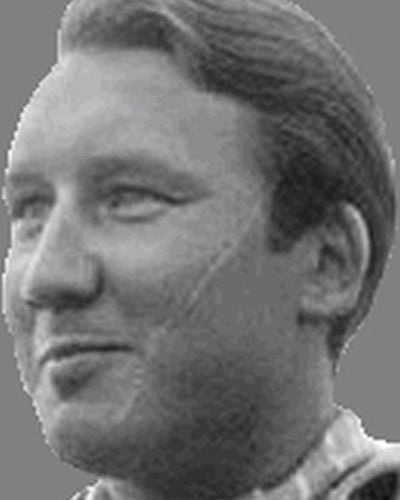Career Summary:
Mike Taylor

- April 24, 1934
- April 04, 2017
- United Kingdom
- Not Active
- 49
- 8
- 23
- 3
- 16.33%
- 46.94%


Mike Taylor (1934-2017) was a British racing driver who was active during the 1950s, making his Formula One Championship debut in 1959 and then ending a career after a horrific crash during the infamous 1960 Belgian Grand Prix at Spa-Francorchamps, the event in which two drivers lost their lives while Taylor and Stirling Moss were injured.
He was paralyzed but luckily he recovered. After that crash, Taylor sued Lotus successfully because of a car failure, becoming one of just a few racers who won a lawsuit against makers of race cars.
He never returned to circuit racing but occasionally participated in rally events, even finishing third in the 1977 London – Sydney Marathon.

Mike Taylor
Born in April 1934, as a son of a former racing driver who later became Mercedes-Benz dealer in London, Mike Taylor entered racing in the mid1950s. His first race cars were an MG TC, Jaguar SS100 and Lotus Seven. In 1958, his father bought him a Lotus Eleven.
Good performances in national events but also notable results outside the UK, such as a victory at Roskilde Ring in Denmark, impressed Colin Chapman, who invited Taylor to drive for Lotus factory team at Le Mans.
In June 1958, Taylor came to Circuit de la Sarthe to drive the #38 Lotus Eleven together with factory driver Innes Ireland. They raced for twenty hours but electrics problem stopped them.
Later that year, Taylor continued to offer impressive performances in sports car races in a Lotus Eleven. He also drove Cooper T45-Climax for Alan Brown in few Formula 2 races.
In April 1959, Taylor was driving Cooper-Climax for Alan Brown in the Aintree 200 F1 non-championship race, finishing fifth overall and the first among F2 drivers. In July, he made an F1 World Championship debut, driving the #50 Cooper-Climax in the British Grand Prix at Aintree Circuit. He retired after 17 laps due to transmission failure.
In sports car races during 1959, Taylor scored few good results on British soil in a Lola Mk I-Climax and won the Grand Prix de Frontieres at Chimay circuit in Belgium driving a Lotus 15-Climax. In June 1959, he returned to Le Mans with Lotus factory team, sharing the #54 Lotus 17-Climax with Jonathan Sieff. They retired after five hours and 23 laps.
In September 1959, Taylor added one more international sports car victory to his account, winning the Coupes de Paris race.

1960 Belgian Grand Prix
In 1960, Taylor made few starts in sports car races in a Lotus 15 before making a debut in a new Lotus 18-Climax F1 car at BRDC International Trophy at Silverstone in May. He completed 32 laps, not being classified in the official standings.
Then, in June, he came with that car at Spa-Francorchamps to compete in the Belgian Grand Prix. Unfortunately, a car suffered mechanical failure during practice and Taylor crashed into trees at about 150 mph. He was badly injured. The similar thing happened to Stirling Moss who crashed in another Lotus 18. He survived but two drivers (Chris Bristow and Alan Stacey) lost their lives during the event.
Taylor was paralyzed for a while but he recovered after a therapy. Later he won a court against Lotus because that was their fault for an accident at Spa.

Mike Taylor was a co-driver to Paddy Hopkirk at 1977 London - Sydney Marathon
Taylor never returned to circuit racing but he participated few times in the intercontinental rally events. In 1968, he and Innes Ireland were driving the #26 Mercedes-Benz 280 SE in the original London – Sydney Marathon, not finishing the race.
In 1974, Taylor partnered Stirling Moss in the #12 Mercedes-Benz 280 SE at London –Sahara – Munich World Cup Rally. They didn't reach the finish, stuck in a desert. In 1977, Taylor was a co-driver to Paddy Hopkirk in the second edition of the London – Sydney Marathon, finishing in the third place in a Citroen CX 2400.

Mike Taylor (right) finished third at 1977 London - Sydney Marathon
Photos: LAT Images, BRDC,

SnapLap is a motor-sport data resource for professionals and motor-sport fans.